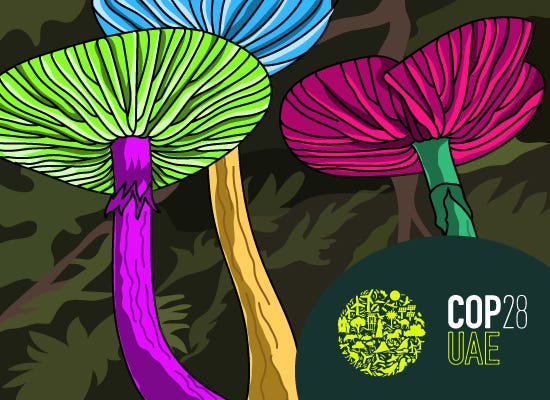Last week, we shared some of the questions on our minds as we prepare for COP28 in Dubai next week. I’d like to raise one more critical opportunity here for everyone who will participate in this important event. As some of you may know, I chair the board of SPUN and have therefore taken an active interest in the power of underground ecosystems to fight climate change. Thanks to scientific advances, we now know that soils are home to vast fungal networks that sequester carbon and sustain much of life on Earth.
Fungal networks draw down ~13 billion tons of CO2 per year into the soil. That’s equivalent to ~1/3 of global anthropogenic energy-related emissions! Much of this carbon remains in the soil, making underground ecosystems the store of 75% of all terrestrial carbon.
Despite their key role in regulating the climate, fungi have been mostly overlooked in climate-change strategies, conservation agendas, and restoration efforts. This is a problem that we should correct, and like most climate issues, the stakes are high. The destruction of underground fungal communities is accelerating both climate change and biodiversity loss.
Just as forests with multiple tree species are more effective as carbon sinks in comparison with monoculture forests, underground ecosystems with higher network biodiversity are also predicted to store more carbon.
These insights are critical as we begin to utilize fungi for targeted nature-based carbon removal. Getting the issue on the agenda is the first step to creating the tools and frameworks we need to protect fungal communities and harness their power to mitigate climate change.
There is some good news. Researchers are starting to visualize and quantify these complex streams of carbon and nutrients to better understand one of the Earth’s most important underground circulatory systems and its flow patterns.
As highlighted in a recent Washington Post article, we need to systematically map and monitor underground biodiversity hotspots — and the vast carbon sink these underground communities represent — across the Earth.
I’ll be advocating for this at COP28 and in the coming year. I hope you will join me in these efforts.
Onward,




